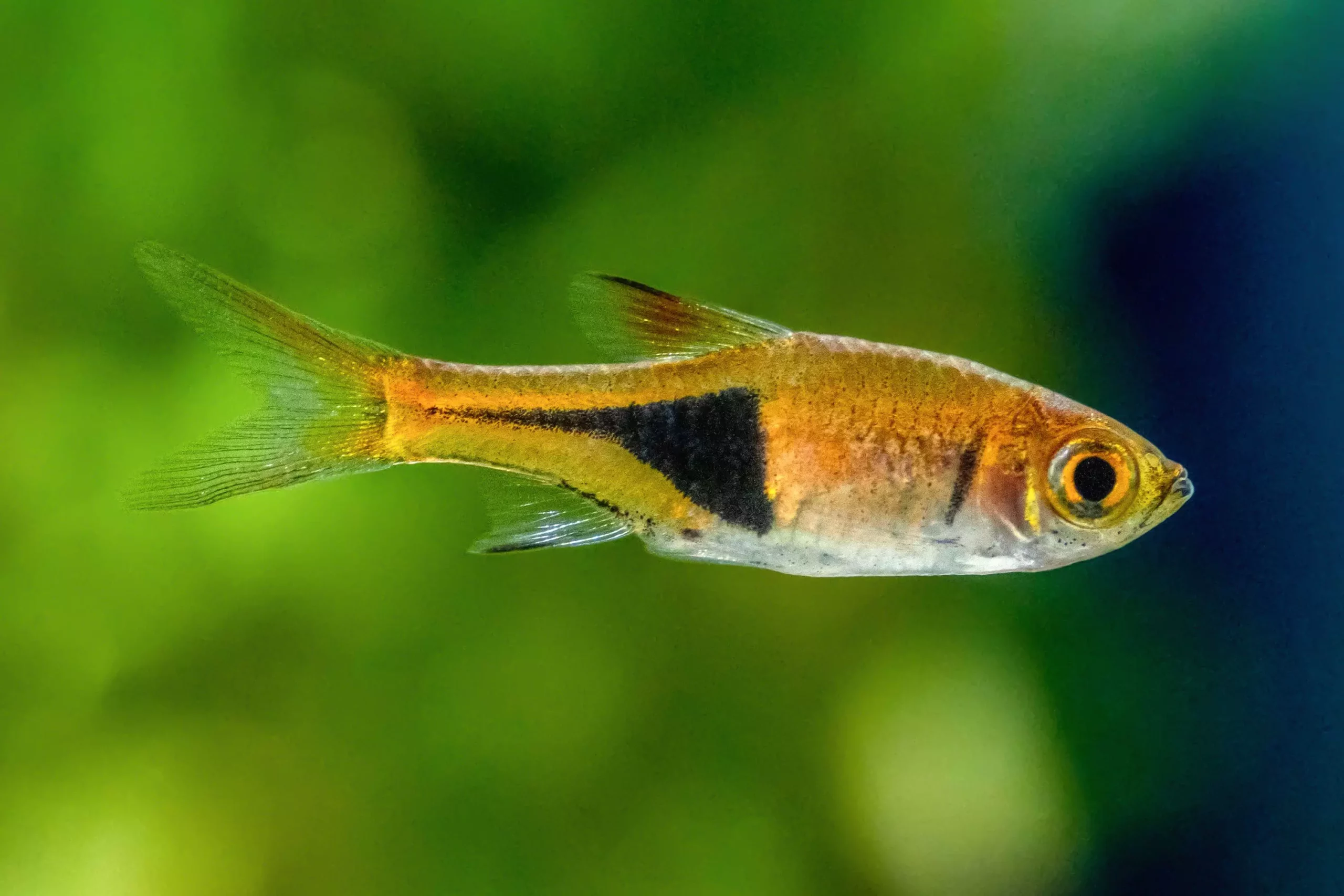For many aquarium enthusiasts, the harlequin rasbora (Trigonostigma heteromorpha) stands out as a true gem among freshwater fish. Known for its captivating reddish-copper hues complemented by a distinctive black wedge-shaped marking, this small species not only serves as a vibrant addition to community tanks but also embodies a peaceful temperament that makes it compatible with various fish types. As a shoaling fish, the harlequin rasbora thrives in groups, creating mesmerizing movement and color in any aquarium setting.
With a maximum size of approximately 1.75 inches (4.5 centimeters), the harlequin rasbora is perfectly proportioned for smaller tanks, making it an excellent choice for hobbyists with limited space. However, as with any aquarium inhabitants, it is essential to consider their needs and the overall dynamics of the tank.
The harlequin rasbora originates from the lush waters of Southeast Asia, specifically Malaysia, Singapore, Sumatra, and southern Thailand. Their native habitats are characterized by soft, acidic water and a rich variety of submerged vegetation. These conditions are typically found in streams that flow through swamped forests, where high concentrations of dissolved humic acids create dark, nutrient-rich waters.
To successfully maintain harlequin rasboras in an aquarium, replicating their natural environment is vital. Providing a well-planted tank with areas of dense foliage, open swimming spaces, and a dark substrate can help mimic their natural habitat. Live plants, specifically those from the Cryptocoryne genus, are particularly beneficial as they closely resemble the flora found in Southeast Asia’s waters.
Diet and Feeding Habits
When it comes to diet, harlequin rasboras are relatively undemanding. In nature, they primarily feed on small insects, making live food an excellent choice for those wanting to promote optimal health. However, they will readily accept frozen, freeze-dried, and flake foods as well. A varied diet will help maintain their health and vitality, reducing the risk of digestive issues and diseases.
To ensure that both male and female harlequins thrive, it’s advisable to include live or frozen foods such as brine shrimp, daphnia, and small worms. These selections are particularly beneficial during the conditioning phase prior to breeding, as they enhance the fish’s overall condition and vigor.
Behavior and Compatibility
The sociable nature of harlequin rasboras makes them an ideal choice for community tanks. They are non-aggressive and generally get along well with most species of freshwater fish, as long as they are similar in size and temperament. Great tankmates include cardinal tetras, neon tetras, and cory catfish. However, caution should be taken when housing them with larger or more aggressive species, which may see the harlequin as a prey item due to its vivid coloration.
In groups of eight to ten or more, harlequin rasboras will reveal their charming shoaling behaviors, darting and weaving through the plants in a harmonious display. However, when kept alone or in small numbers, they can become timid, losing some of their lively charisma.
Breeding harlequin rasboras can be somewhat challenging compared to other popular freshwater species. Unlike many rasbora species that scatter eggs, harlequin rasboras are egg layers and require specific conditions for successful spawning. To prepare for breeding, it’s essential to select young, healthy specimens and condition them with nutritious live foods.
Once ready, setting up a dedicated breeding tank with soft, acidic water, a temperature range between 76°F to 80°F (24°C to 27°C), and plenty of broad-leafed plants is crucial. The stimulating environment encourages the males to perform their characteristic dance to attract females. Once spawning occurs, a single female can lay anywhere from 80 to over 300 eggs, which will adhere to the undersides of leaves. After hatching, the fry should be left in the tank until they become free-swimming, at which point they will require finely-sized foods.
For aquarists considering adding harlequin rasboras to their collections, understanding and providing for their environmental, dietary, and breeding needs is paramount. Careful planning to create a harmonious community tank with an appropriate selection of compatible species will ensure these beautiful fish thrive. With their stunning appearance and gentle nature, harlequin rasboras not only contribute beauty and movement to an aquarium but also offer a rewarding experience for dedicated fish keepers. Whether you are a seasoned enthusiast or a novice just starting, the harlequin rasbora can be a delightful addition that enhances the aquatic landscape of your home.

